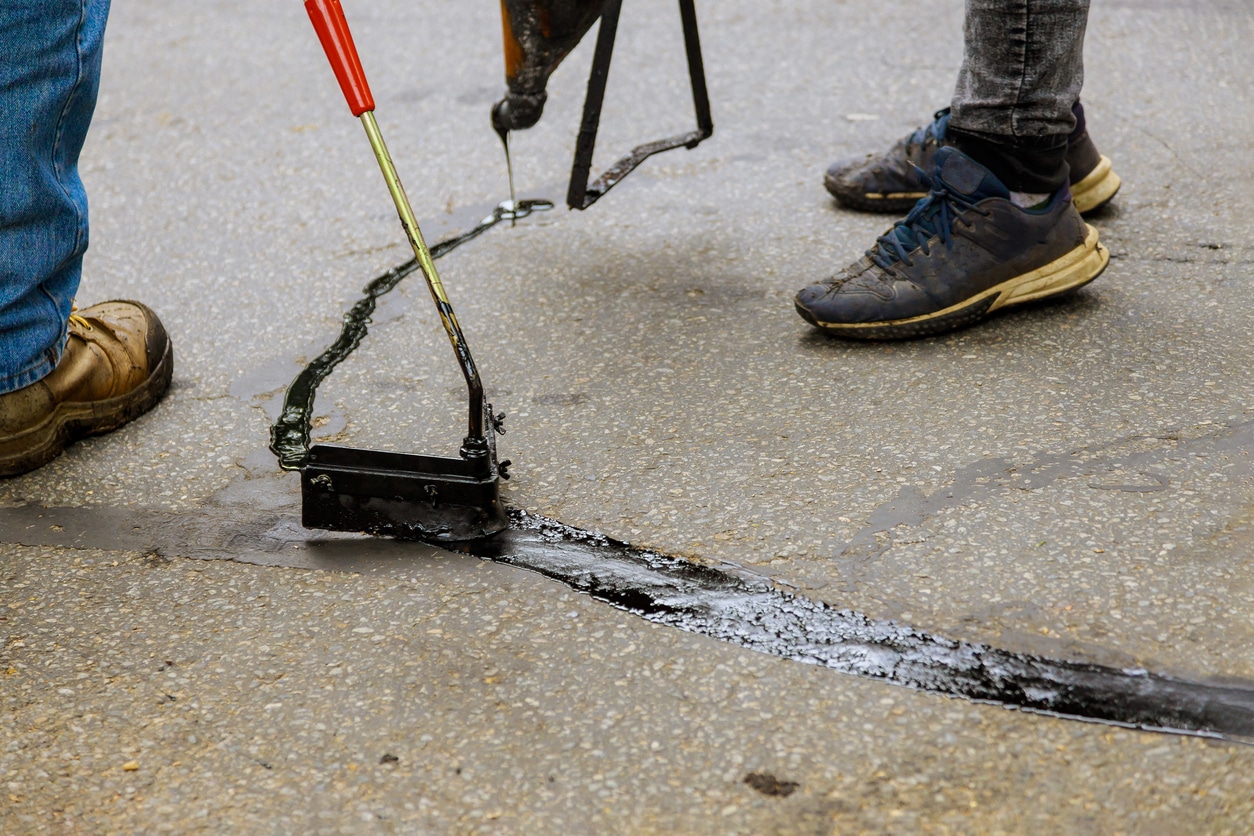Unleash the Prospective: Regrading and Asphalt Sealing for Commercial Areas
Unleash the Prospective: Regrading and Asphalt Sealing for Commercial Areas
Blog Article
Hot Mix Asphalt: A Lasting Remedy for Pavement
Hot Mix Asphalt (HMA) has arised as a leading lasting selection for sidewalk services, using a myriad of ecological benefits and ingenious technologies. Its capability to reuse products and lower power usage offers an engaging situation for its adoption in roadway construction jobs. Furthermore, the long-lasting performance and toughness of HMA make it a preferred choice for facilities development. As the demand for eco-friendly construction techniques expands, discovering the nuances of HMA's sustainability can give important understandings into the future of sidewalk services.
Environmental Benefits of Warm Mix Asphalt
Additionally, Hot Mix Asphalt assists to mitigate urban warm island results. Its dark shade soaks up sunshine, minimizing the amount of heat mirrored back into the ambience contrasted to lighter-colored pavements. This can decrease ambient temperatures in city areas, decreasing the demand for air conditioning and inevitably decreasing power consumption.
Furthermore, Warm Mix Asphalt adds to improved stormwater management. Its porous nature enables water to infiltrate the pavement and reenergize groundwater supplies, reducing drainage and the danger of flooding. These ecological advantages make Hot Mix Asphalt a lasting selection for leading freeways and roads.
Energy Effectiveness in HMA Production
Is energy effectiveness an essential aspect in the production of Warm Mix Asphalt (HMA)? Power plays a significant function in the production of HMA, affecting both cost and environmental sustainability. One key facet of power efficiency in HMA production is the use of warm mix asphalt (WMA) modern technologies.
In addition, advancements in plant innovations have actually caused even more energy-efficient HMA manufacturing processes. Modern plants are created with features like recycled asphalt sidewalk (RAP) processing capabilities, effective heater systems, and boosted insulation, all adding to energy cost savings. By enhancing energy use in HMA production, the sector can reduce its carbon impact while preserving premium sidewalk products. Energy performance is, as a result, an essential consideration in ensuring the sustainability of Warm Mix Asphalt manufacturing.
Recyclability of Warm Mix Asphalt
The recyclability of Warm Mix Asphalt (HMA) is a critical element of its sustainability and long-lasting ecological effect. HMA is just one of the most recycled materials in the United States, with over 100 million bunches of recovered asphalt sidewalk (RAP) being reused each year in brand-new sidewalk building and construction. Recycling HMA uses a number of environmental advantages, such as reducing the requirement for virgin products, reducing energy intake throughout manufacturing, and lowering the quantity of waste sent out to garbage dumps.
The process of reusing HMA entails milling the existing pavement, squashing it right into smaller sized items, and blending it with brand-new accumulation and asphalt binder to develop a recycled mix. This recycled mix can usually execute in addition to or even better than standard HMA, while needing less raw products and producing reduced greenhouse gas emissions. By integrating RAP into new sidewalk jobs, road companies can conserve natural deposits, decrease expenses, and decrease the environmental footprint of roadway building and upkeep tasks. Generally, the recyclability of HMA plays a significant role in advertising sustainable techniques within the sidewalk market.

Long-Term Performance of HMA
Asphalt pavements show longevity and strength over an extended duration, reflecting the long-term efficiency of Warm Mix Asphalt (HMA) Furthermore, developments in HMA technology, such as the original source the usage of polymer-modified binders and cozy mix asphalt, have additionally improved the toughness and longevity of HMA sidewalks. By prioritizing quality building and upkeep methods, HMA continues to show itself as a cost-effective and sustainable service for durable sidewalk facilities.

HMA: Toughness and Sustainability
Showing both resilience and sustainability, Warm Mix Asphalt (HMA) has become a keystone in the building and construction of resilient sidewalk facilities - commercial parking lot paving. HMA's sturdiness originates from its ability to withstand hefty lots, harsh weather, and high web traffic quantities, making it a trusted selection for highways, freeways, and airport runways. The make-up of HMA, which typically includes accumulations, binder, and filler, plays an important duty in enhancing its longevity and resistance to tear and wear
In addition, HMA's sustainability hinges on its recyclability and energy-efficient manufacturing process. The ability to recycle recovered asphalt pavement (RAP) in new HMA blends minimizes the demand for virgin materials and decreases the environmental effect of pavement building and construction and upkeep. In addition, the energy efficiency of generating HMA hinges on its lower blending temperature levels compared to various other sidewalk products, resulting in reduced energy intake and greenhouse gas exhausts.
Verdict
In go to my site verdict, hot mix asphalt (HMA) supplies a sustainable solution for pavement with its ecologically pleasant characteristics. HMA's recyclability, energy effectiveness in manufacturing, and long-lasting sturdiness make it an environment-friendly selection for road construction.
HMA is one of the most recycled products in the United States, with over 100 million This Site loads of recovered asphalt pavement (RAP) being recycled each year in brand-new pavement building and construction.The procedure of reusing HMA entails milling the existing sidewalk, crushing it into smaller items, and mixing it with brand-new accumulation and asphalt binder to create a recycled mix.Asphalt sidewalks show toughness and strength over a prolonged period, mirroring the long-lasting performance of Warm Mix Asphalt (HMA) In addition, advancements in HMA innovation, such as the usage of polymer-modified binders and warm mix asphalt, have even more improved the toughness and longevity of HMA sidewalks. The capacity to recycle redeemed asphalt pavement (RAP) in new HMA mixes decreases the demand for virgin materials and decreases the ecological effect of sidewalk construction and upkeep.
Report this page